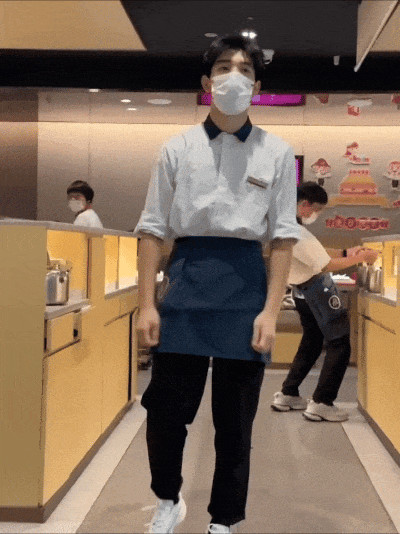Haidilao, the renowned hotpot chain, is currently making waves across social media, not just for its delicious food, but for an unexpected and highly entertaining reason: the “Subject Three” dance. Videos showcasing Haidilao staff energetically performing this viral dance have exploded online, turning dinner into a dinner and a show experience and sparking a lively debate among netizens.
This unique blend of hotpot dining and rhythmic dance performances has captured the attention of Chinese social media users. The “Subject Three” dance itself is rooted in the vibrant cultural traditions of the Guangxi Zhuang Autonomous Region in southern China. It’s said that for anyone from Guangxi, life is marked by three essential subjects: mastering folk songs (Subject One), savoring rice noodles (Subject Two), and, of course, dancing (Subject Three). This tradition originated from joyful wedding celebrations where communal dancing was a central part of the festivities, evolving into a recognized cultural phenomenon.
 Haidilao
Haidilao
Now, Haidilao is bringing this regional dance to a national stage, allowing customers to request the “Subject Three” dance directly from their servers. One viral video clip features a waiter named Xiao Pang, who became an internet sensation after performing the dance to liven up a customer’s birthday celebration. Xiao Pang shared with Chao News that he learned the dance online, stating, “I enjoy dancing in my free time, so I gave it a try and, after a few attempts, I mastered it.”
The “Subject Three” dance had already gained popularity on Douyin, China’s version of TikTok, before Haidilao embraced it. However, its integration into the hotpot dining experience has pushed it into the mainstream spotlight.
Public opinion regarding this viral dance trend at Haidilao is divided. Many appreciate the fun and lively atmosphere it injects into the restaurant setting. They see it as a creative and engaging way to enhance the dining experience. On the other hand, some find the dance awkward and even off-putting in a dining environment.
Recently, the hashtag “Parent complained that taking her child to Haidilao and witnessing Subject Three dance is very uncomfortable” became a top trending topic on Weibo, a popular Chinese microblogging platform. A customer from Hangzhou, Zhejiang Province, shared her online dining experience, expressing discomfort for her family, particularly her child, due to the loud music and what she described as a “cheesy” and overly theatrical dance performance.
 Haidilao
Haidilao
Despite some negative feedback, Haidilao management has indicated that since the “Subject Three” dance went viral, numerous employees have voluntarily learned the dance moves. However, the implementation of this service innovation varies across different Haidilao locations.
Addressing rumors about high salaries for dancing staff, a Haidilao spokesperson clarified that employee compensation is based on location and role. Initiatives like the “Subject Three” dance are incentivized as part of a performance-based reward system, encouraging staff to proactively contribute to a vibrant and enjoyable restaurant atmosphere. This incentive structure empowers employees to take initiative and enhance customer experiences beyond traditional service roles.
Following the “Subject Three” dance craze, Haidilao service staff have also started performing another viral dance known as the “glass-cleaning” dance. This dance involves more intimate interaction with customers, featuring twisting and turning while holding hands. This new dance has also generated controversy, with the hashtag “Haidilao staff’s performance of glass-cleaning dance was accused of being vulgar” trending on Weibo, indicating a segment of the public finds this newer dance even more inappropriate.
 Haidilao
Haidilao
In conclusion, the “Subject Three” dance phenomenon at Haidilao reflects the company’s innovative approach to customer engagement and its willingness to tap into viral trends. While it has undeniably boosted the restaurant’s visibility and provided entertainment for many diners, the mixed reactions highlight the challenges of balancing entertainment with customer comfort and cultural sensitivities. As Haidilao continues to experiment with these viral dance trends, it will need to carefully navigate public perception and ensure that its service enhancements resonate positively with the majority of its diverse customer base.

